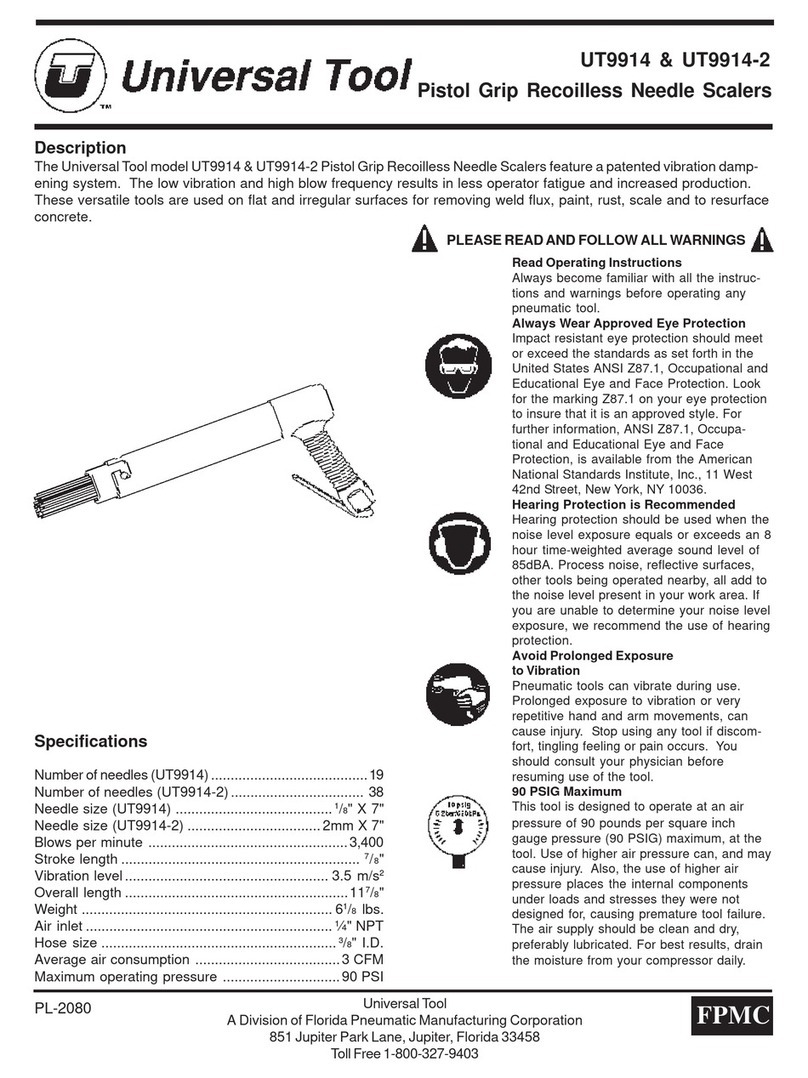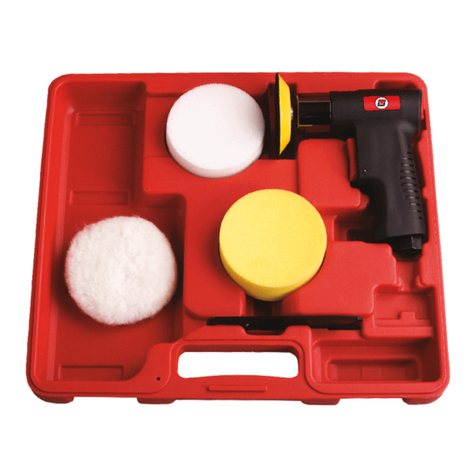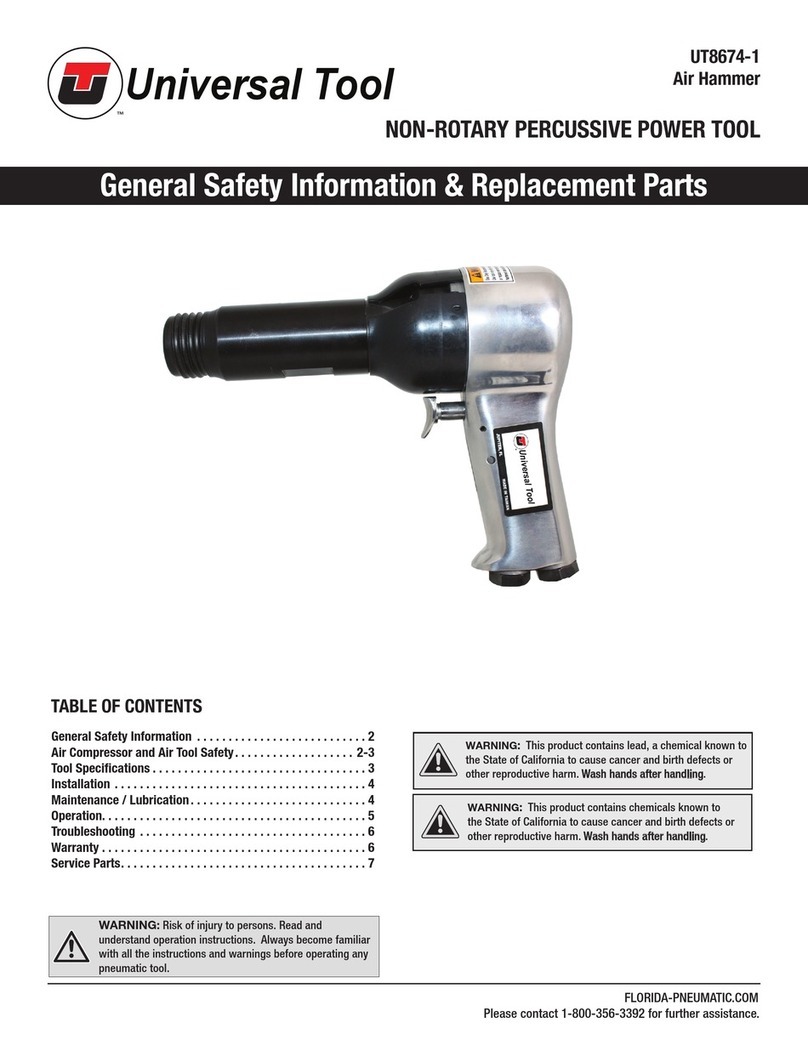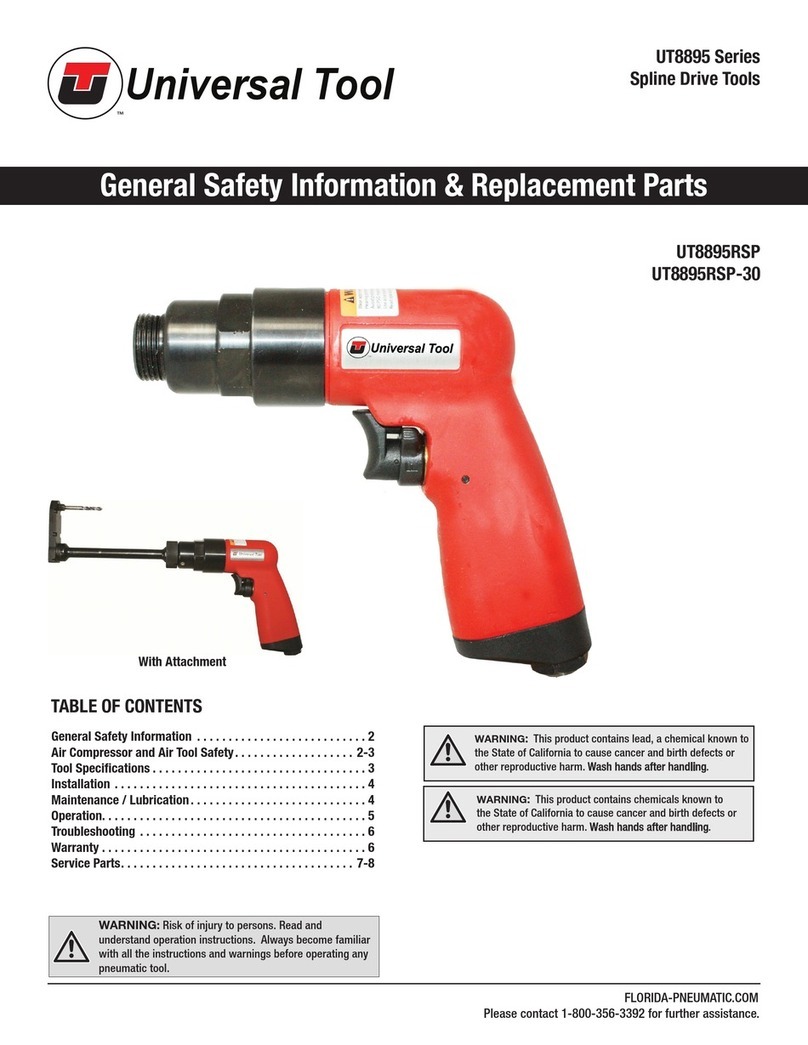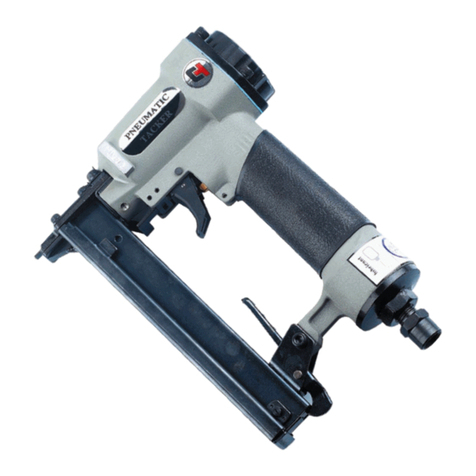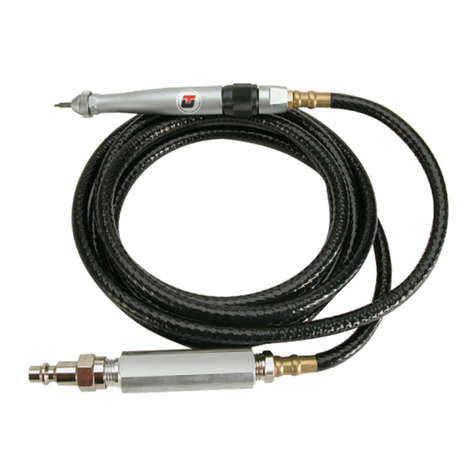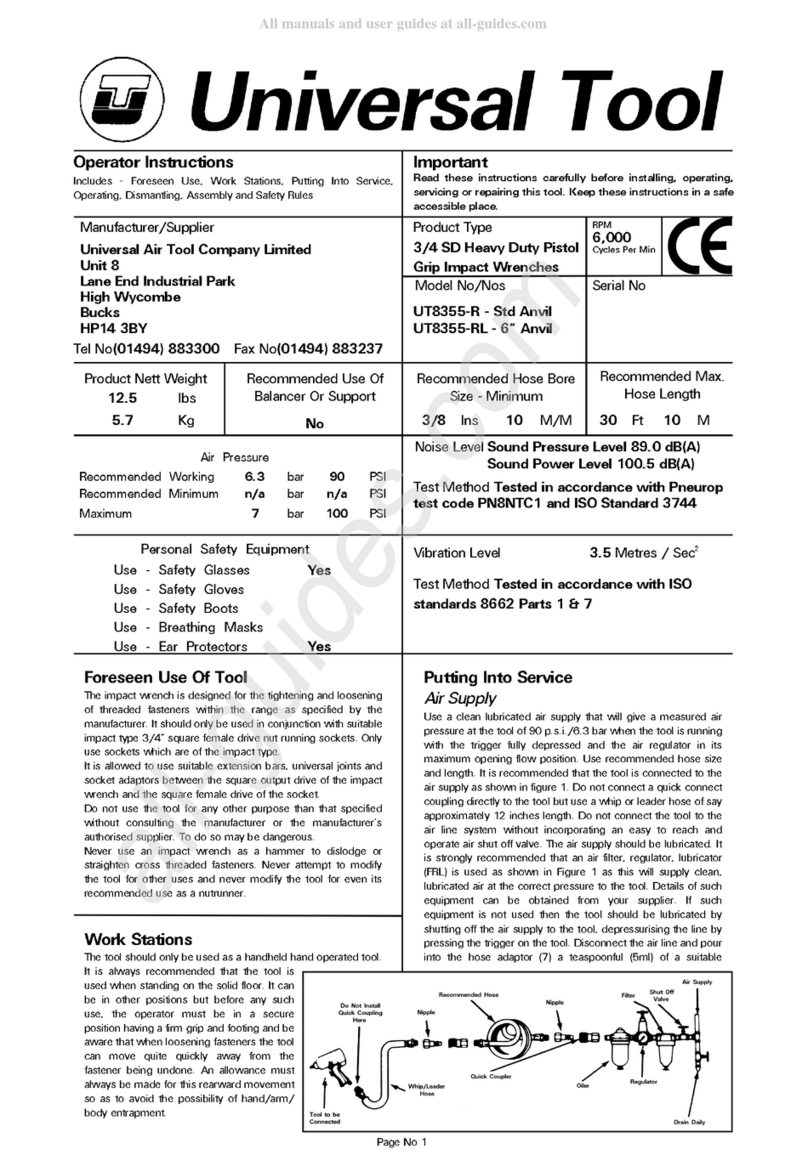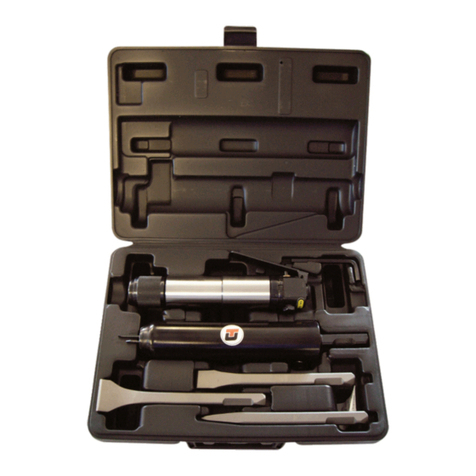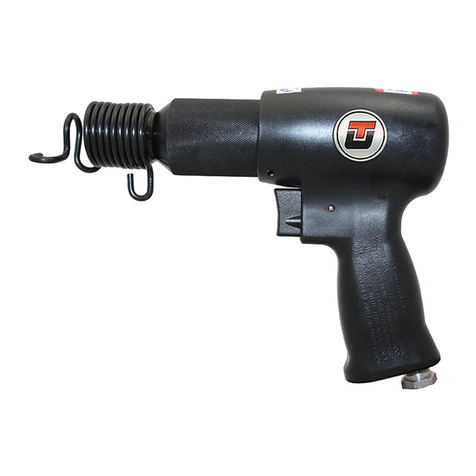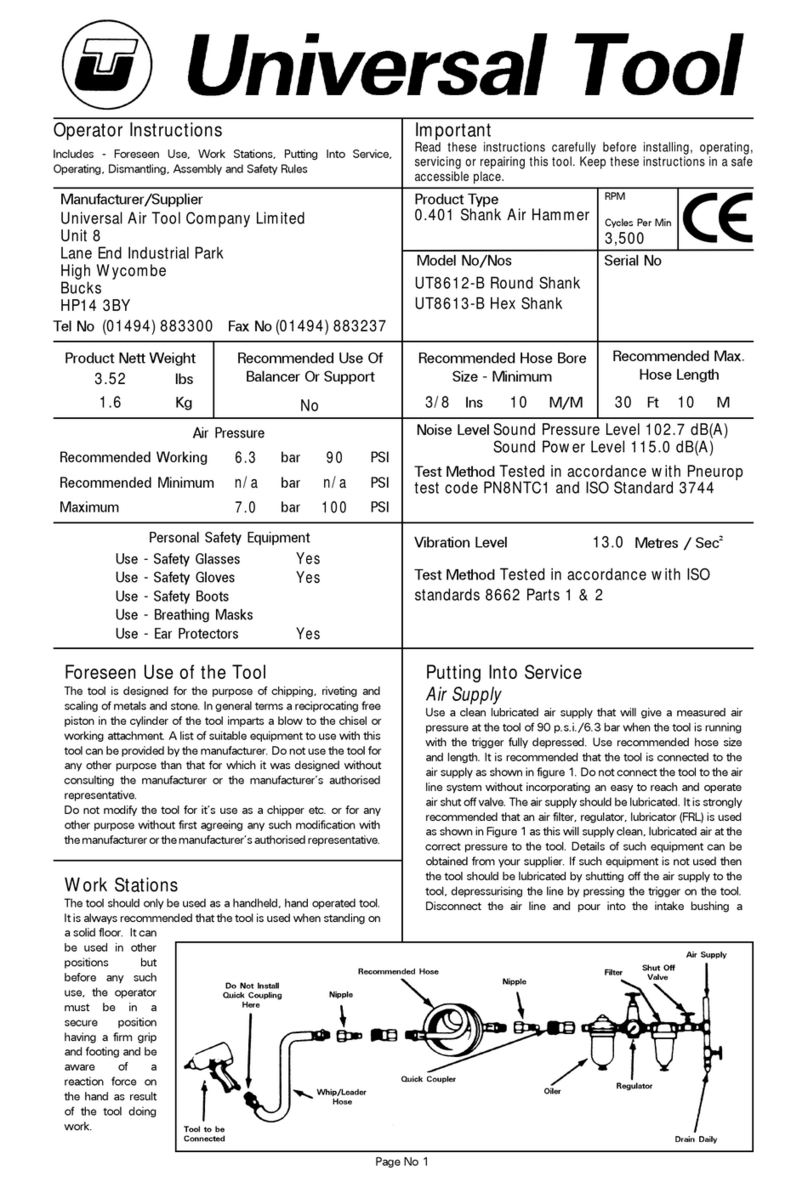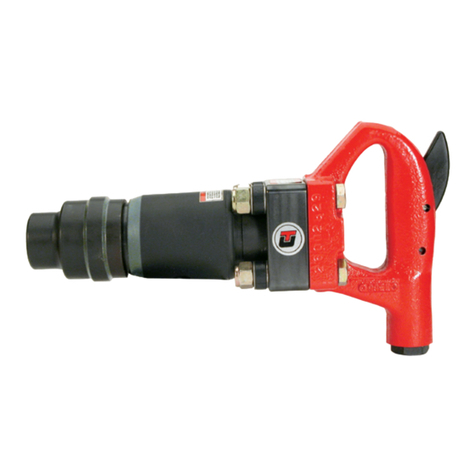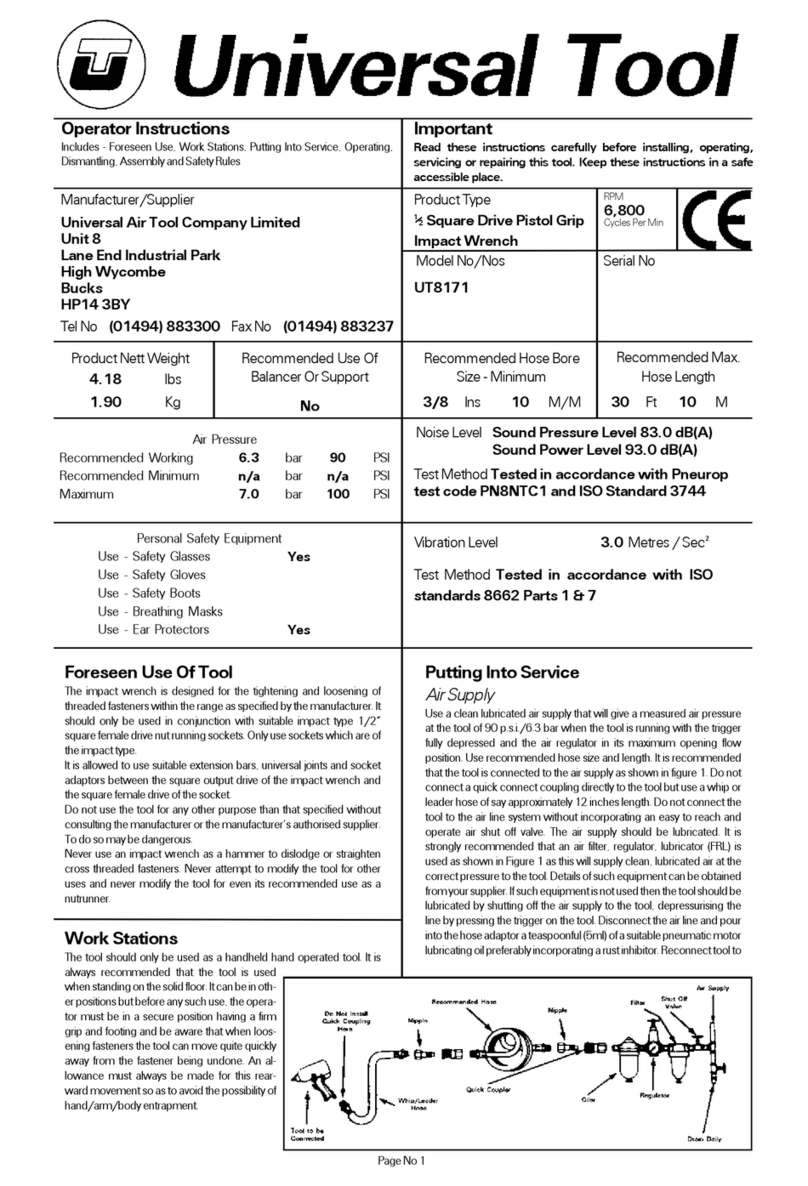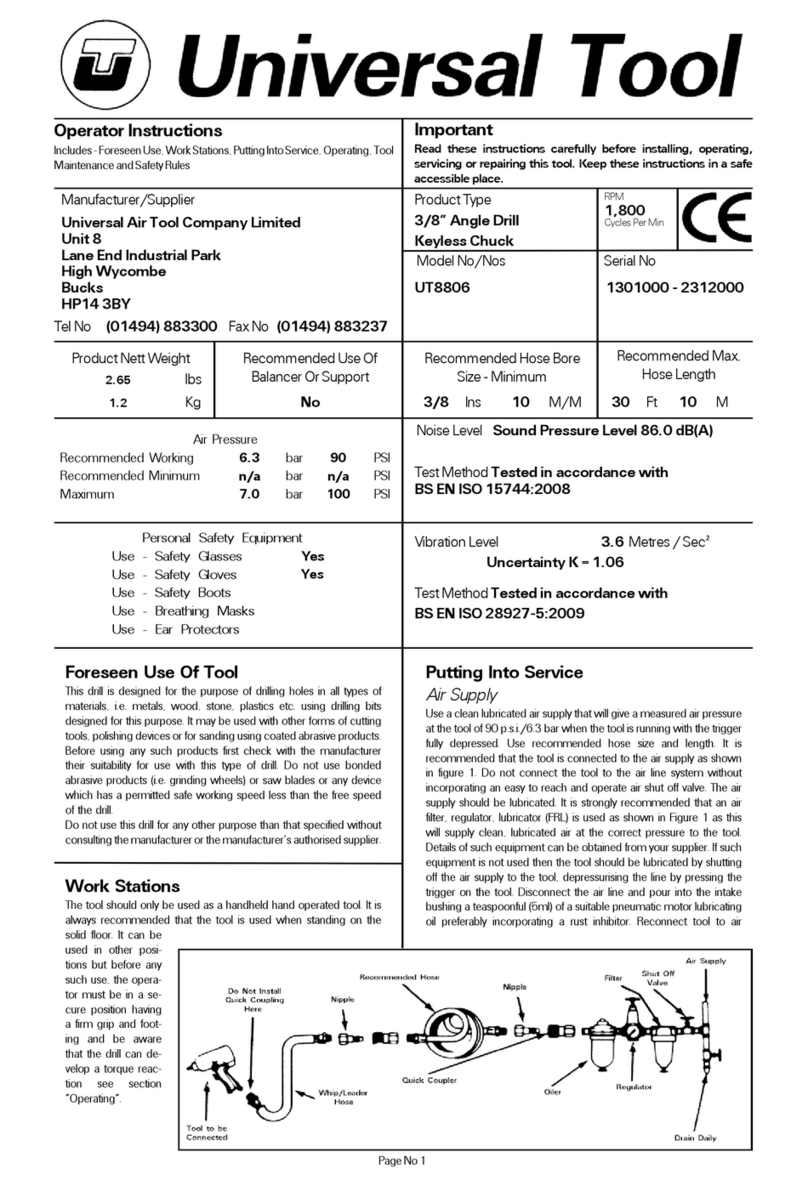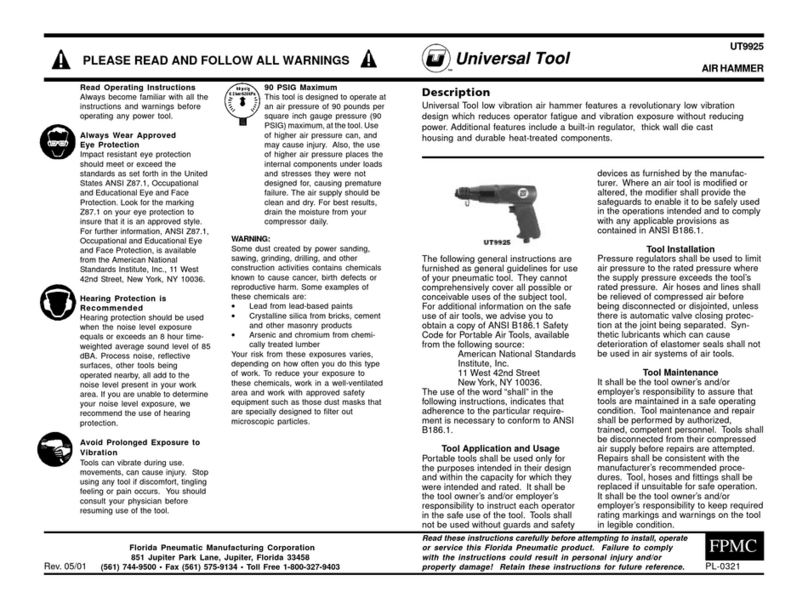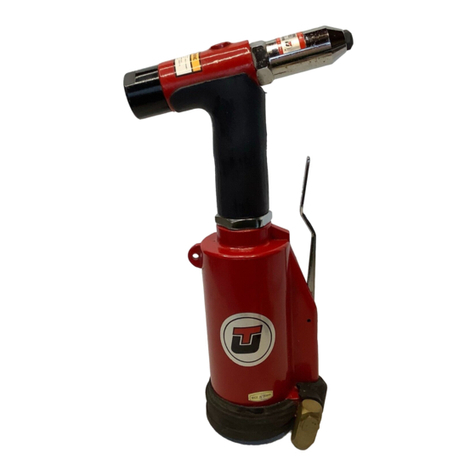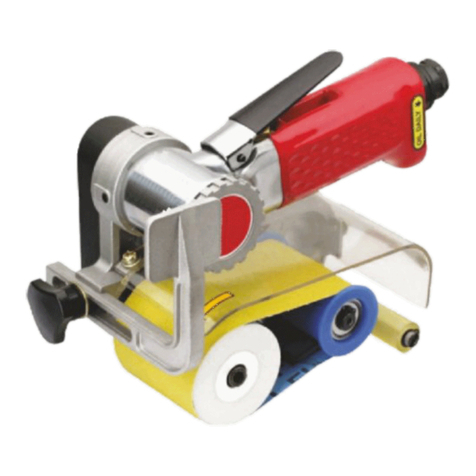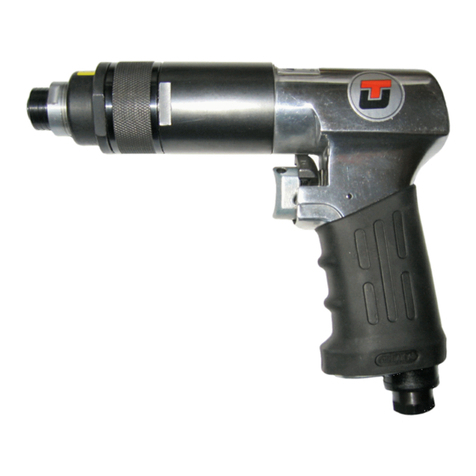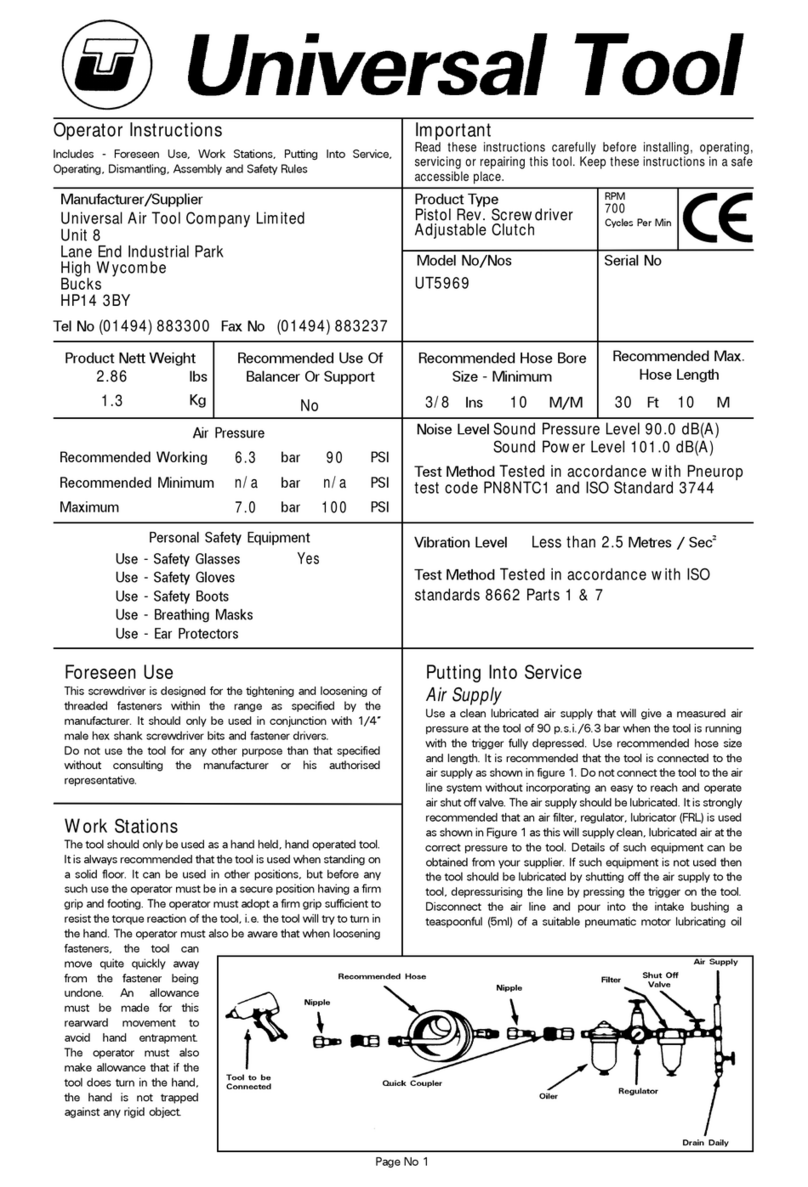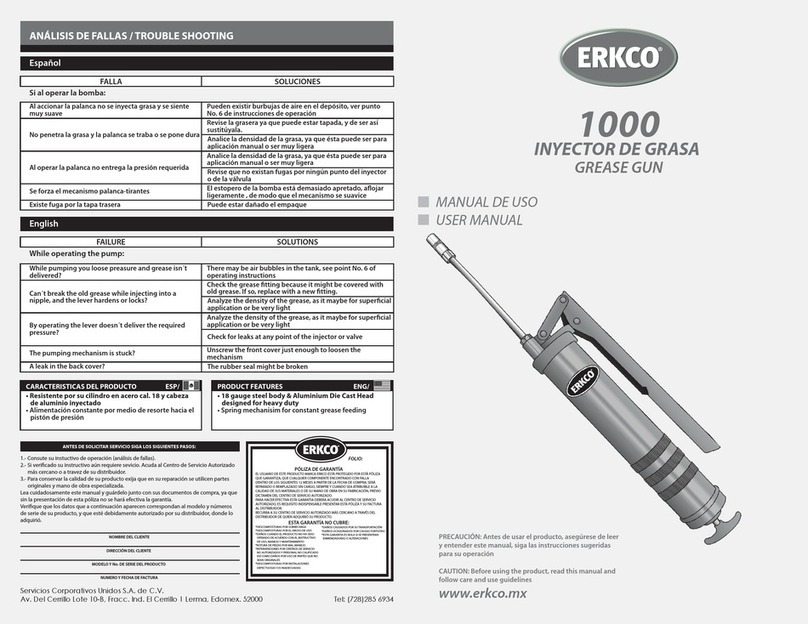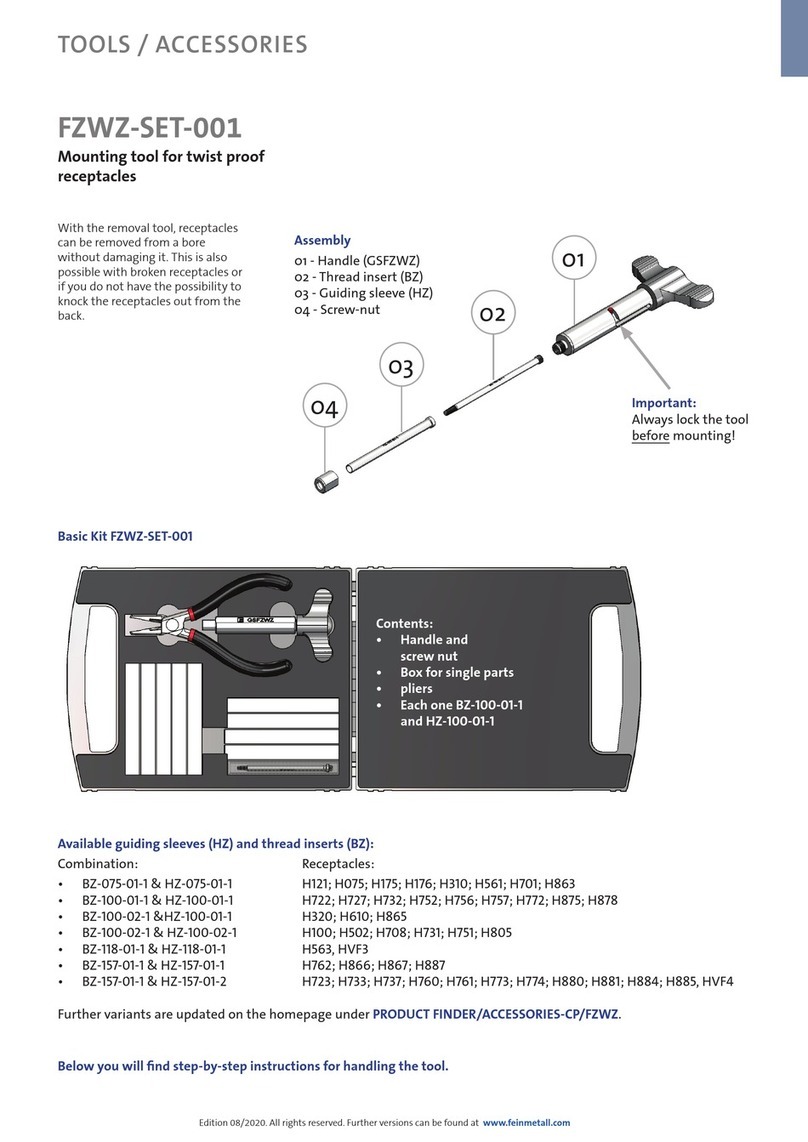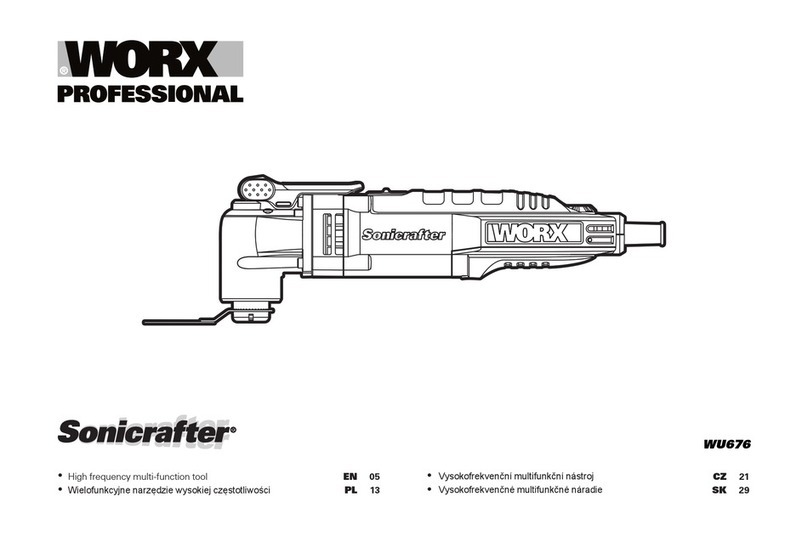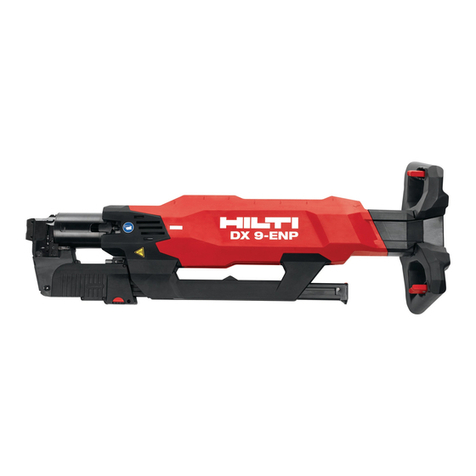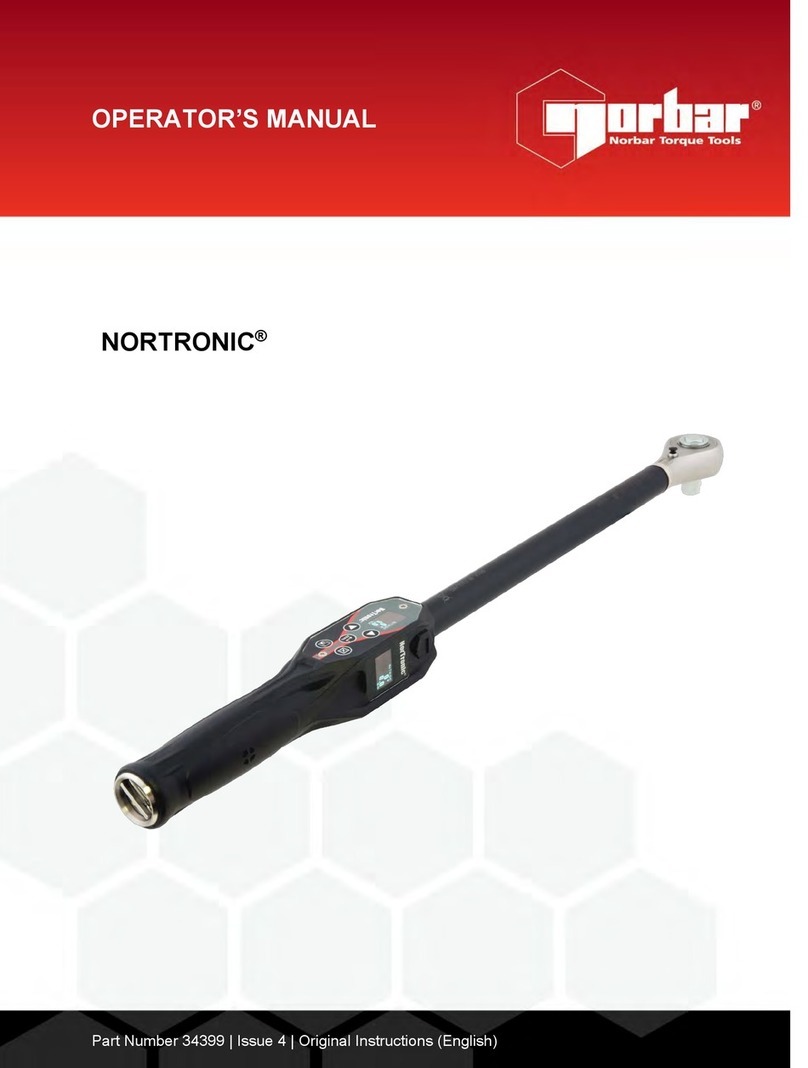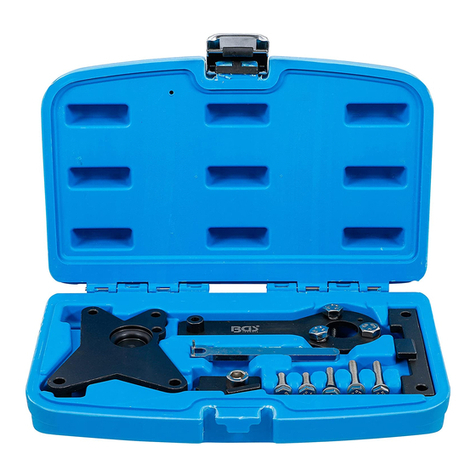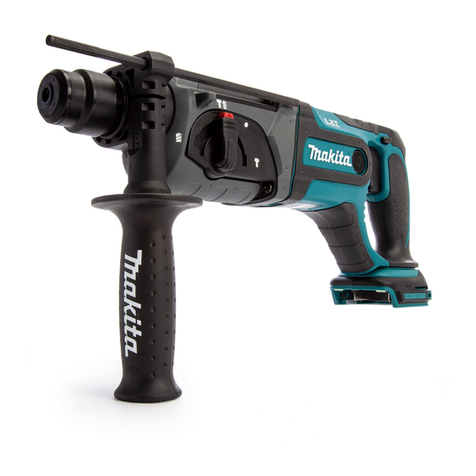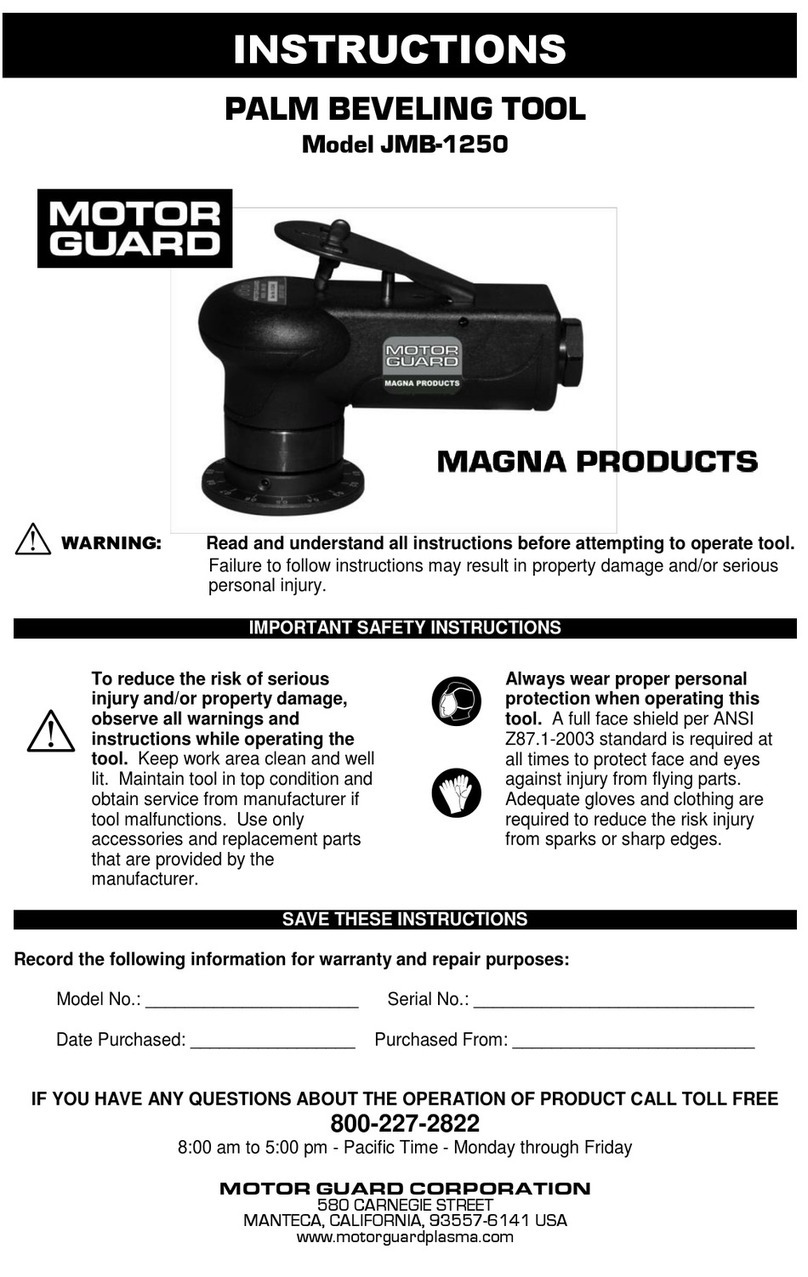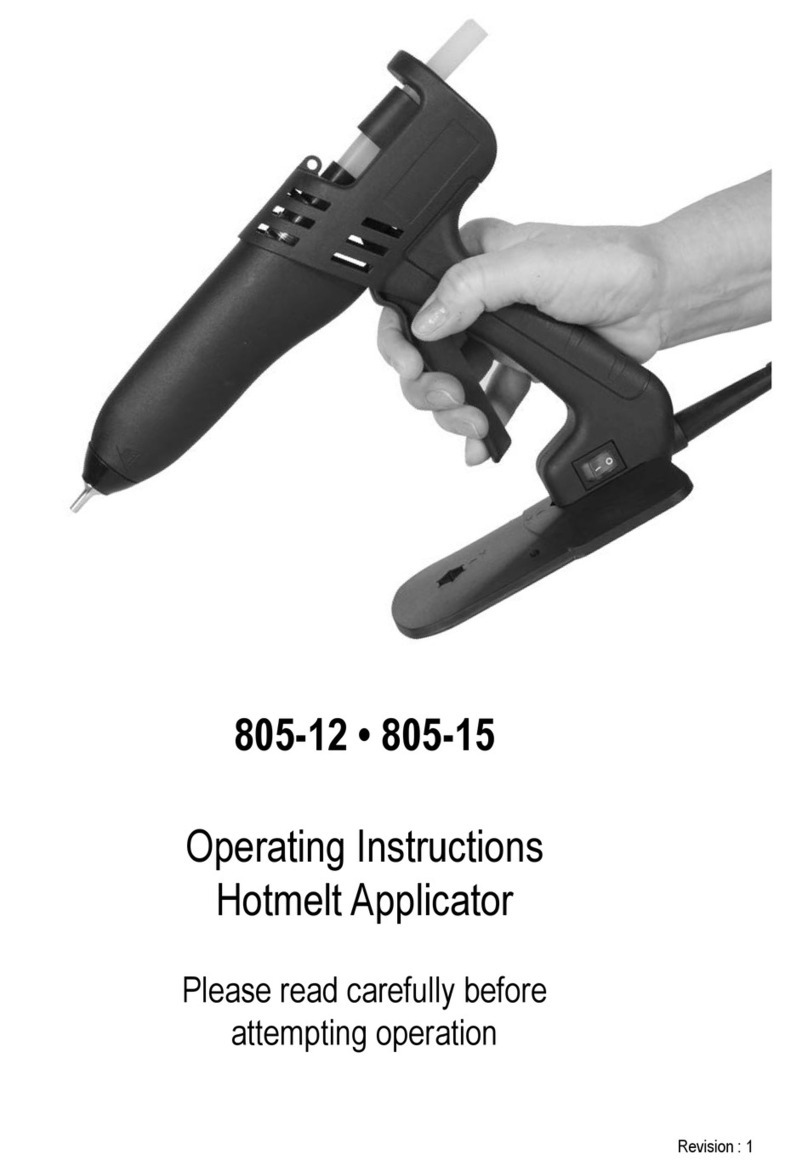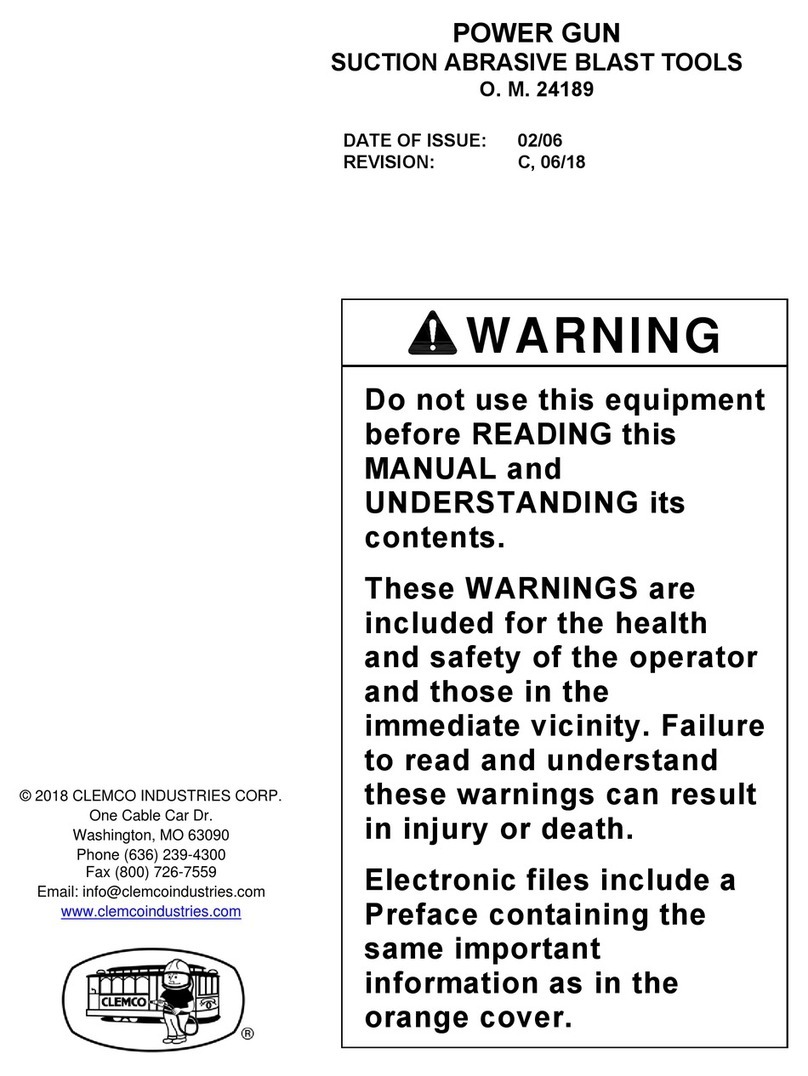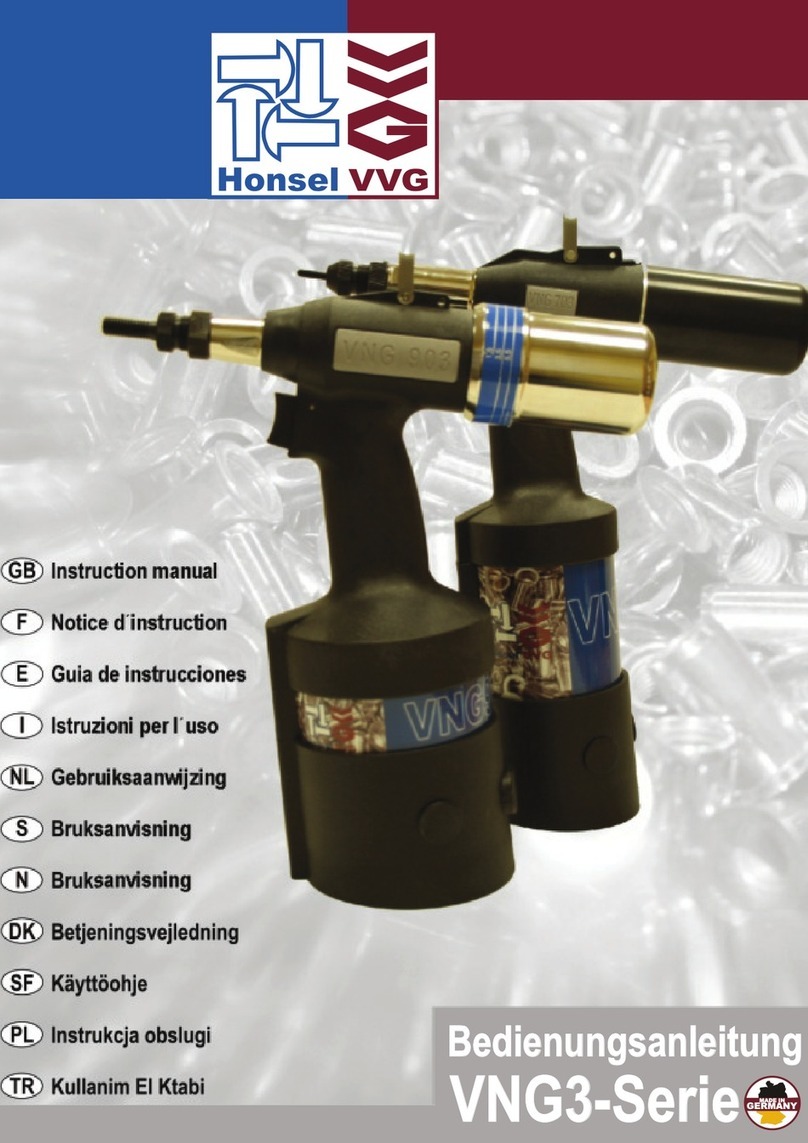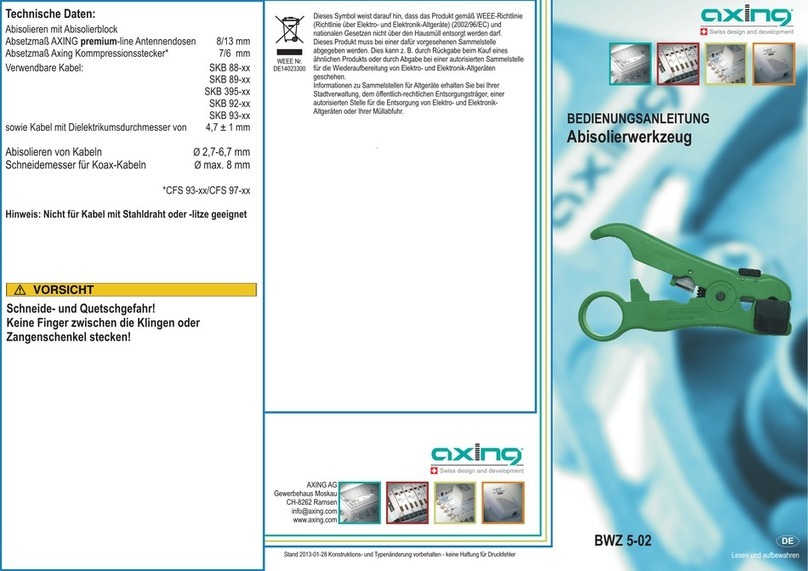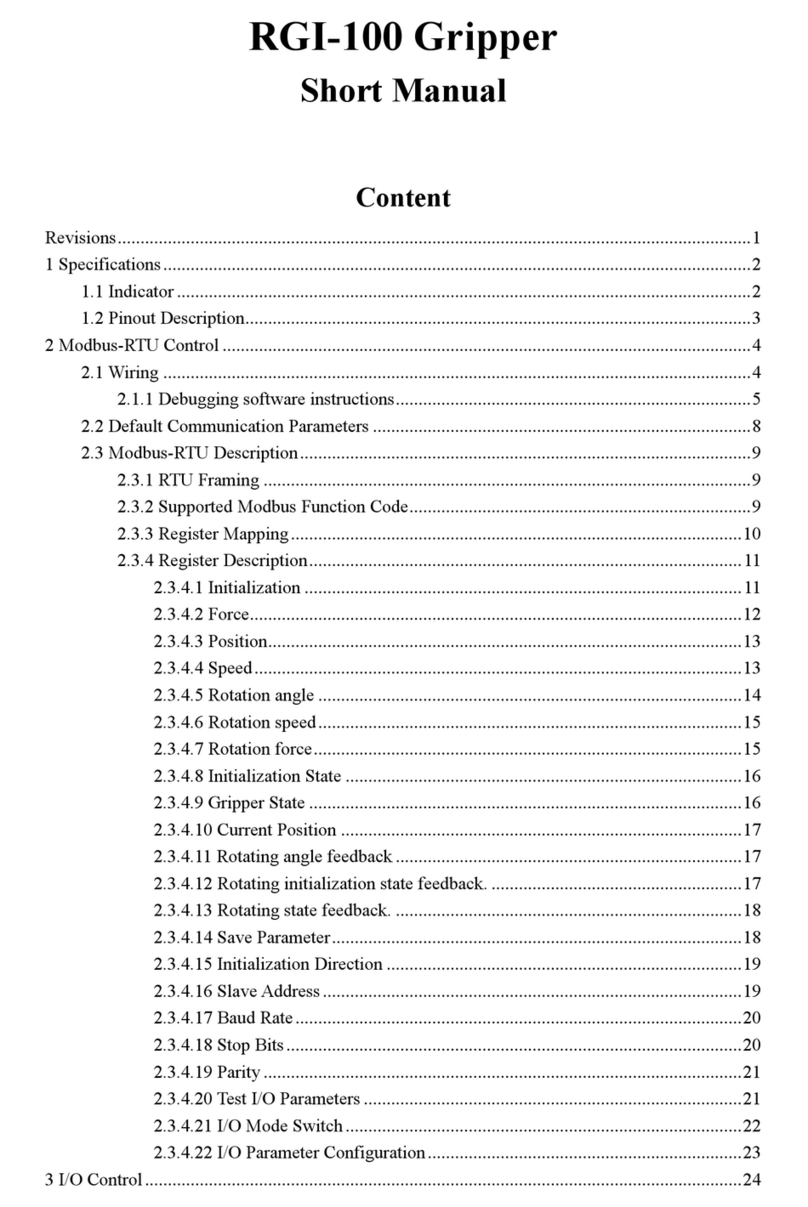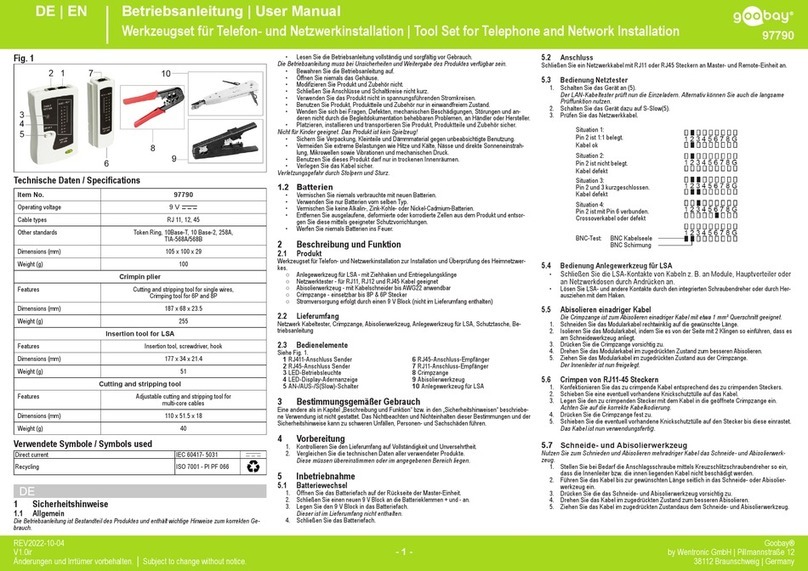
Operating
Select the correct screwdriver bit or fastener driver to suit the screw
or fastener to be tightened or loosened. Slide back the sleeve (4) and
insert appropriate drive bit.
Model UT5964 has an adjustable clutch so that the torque applied to
the fastener can be adjusted to give the required tightness within the
torque range of the tool. To set the tool to give a particular torque
output, first remove the clutch housing - left hand thread and pull out
the clutch assembly being careful not to lose guide pin and spring
(23) and (24). Hold the clutch carrier or insert a 1/4 hex Allen key in
cam spindle (14) and with a spanner rotate adjustment nut (7) until it
just touches sleeve bearing (6). This is the clutch set at its lowest
output level. Reassemble the tool, try it on the joint to be fastened. If
more torque is required to place the fastener repeat the process but
rotate the adjustment nut (7) until there is a gap between it and the
sleeve bearing proceeding at approximately one turn of the nut at a
time until the correct tightness is achieved. If too high a setting is
reached rotate the adjustment nut back a part of a turn at a time.
If the adjustment nut (7) is rotated too far along the cam spindle (14)
it is possible that the clutch will not slip and a reaction torque against
the hands will be felt. In this situation, if the fastener is not sufficiently
tightened or cannot be loosened then the tool in adjustable clutch
mode has insufficient capacity. Select a more powerful tool. The
person setting up the tool must be aware of this torque reaction at
high setting levels of the clutch and that the tool will try to turn against
the hand. All that is required is a firm grip.
The tool, when the stall torque position has been reached, can still be
used to set or loosen fasteners, provided the operator is aware of the
need to resist the torque reaction of the tool. Further adjustment of
adjusting nut (7) at this point will not increase the output of the tool.
The only thing that will affect the output is a change in the air supply
pressure. The output can be increased up to the use of the maximum
allowed supply pressure and decreased with a reduction in supply
pressure until the tool fails to operate.
It must also be understood that even if the clutch is set to slip it may
not do so if the supply air pressure falls below the pressure at which
the clutch was set. It is therefore strongly recommended that a
pressure control valve is used. Information as to suitable equipment
can be obtained from your supplier.
When using the tool keep the screwdriver bit pressed firmly into the
screw head to avoid cam out and screw head damage.
Dismantling & Assembly Instructions
Disconnect tool from the air supply.
Grip the tool in a vice fitted with soft jaws on housing (36) and
unscrew (left hand thread) clutch housing (5) from internal gear (22).
Pull out clutch assembly being careful not to lose spring guide (23)
and spring (24). Grip the clutch assembly and with a needle pointed
tool prise out retaining ring (1) and remove washer (2) spring (3) and
ball retainer (4) being careful not to lose screwdriver bit retaining ball
(13). Again with a needle pointed tool remove second retaining ring
(1) and pull off sleeve bearing (6). Unscrew adjusting nut (7) and pull
off washer (8), clutch spring (9) and washer (10). Remove from vice
and tap the front end to remove 4 off balls (11). Remove retaining ring
(15) and separate cam spindle (14) from clutch carrier (12). Remove
a third retaining ring (1) and pull off drive dog (16).
Unscrew internal gear (22) from housing (36). Grip the internal gear
(22) and push out the internal gear assembly and separate bearing
(21), 3 off planet gears (26) and gear carrier (25) with 3 off pins. Do
not remove the 3 off pins. Drive out pin (37). Drive out pin and
unscrew set screw to be able to pull off trigger (47) and remove valve
spring (46). Grip throttle valve (40) and pull out the complete valve
assembly. Separate reverse valve (43) with ball (44), O-ring (42),
reverse valve bushing (41), O-ring (39), throttle valve (40) and O-ring
(38). O-ring (39) may be taken off of throttle valve (40). Unscrew air
inlet (51) and remove two screws (50) and take out exhaust diffuser
(49). Carefully grip the splined end of the rotor (29) and pull out the
complete motor assembly from housing (36). Remove pin (32).
Remove retaining ring (28P) and grip bearing case (28) and with a
non metallic or soft metal (lead or aluminium) hammer tap the splined
end of rotor (29) to drive it through bearing (27) and bearing case
(28). Remove cylinder (31) and 4 off rotor blades (30) from rotor (29).
Support the cylinder side face of end plate (33) and tap the non
splined end of the rotor (29) to separate it from end plate (33) and
bearing (34). Tap out bearing (27) from bearing case (28).
Reassembly
Clean all components and examine for wear. Look in particular for
cuts on O-rings and wear on rotor blades and clutch parts. Replace
parts only with parts obtained from the manufacturer or an authorised
distributor. Coat all parts with a pneumatic tool lubricating oil and
grease all bearings, gears and clutch parts with a molybdenum or
lithium based general purpose grease and reassemble in the reverse
order. Before reassembling make sure that the faces of end plates
(28) and (33) that abut cylinder (31) are flat and free from burrs and
surface marking. If necessary lap on a flat very fine grade of abrasive
paper. When refitting the complete motor assembly in the housing
(36) first make sure the assembly is clamped tightly together and the
rotor (29) spins freely. Slide the assembly with pin (32) into the
housing (36) ensuring that the motor locating pin (32) locates in the
hole in the bottom of the main bore of housing (36) situated between
the two main ports. Reassemble in the reverse order.
Reset the clutch and/or the air pressure as required - see Section
Operating.
supply and run tool slowly for a few seconds to allow air to circulate
the oil. If tool is used frequently lubricate on daily basis and if tool starts
to slow or lose power.
It is recommended that the air pressure at the tool whilst the tool is
running is 90 p.s.i./6.3 bar. The tool can run at lower and higher
pressures with the maximum permitted working air pressure of 100
p.s.i./7.0 bar.
Page No 2
Safety Rules For A Screwdriver
1) Read all the instructions before using this tool. All operators must be
fully trained in its use and aware of these safety rules.
2) Do not exceed the maximum working air pressure.
3) Use personal safety equipment.
4) Use only compressed air at the recommended conditions.
5) If the tool appears to malfunction remove from use immediately
and arrange for service and repair.
6) If the tool is used with a balancer or other support device ensure
that it is fixed securely.
7) Always keep hands away from the working attachment fitted to the
tool.
8) The tool is not electrically insulated. Never use the tool if there is any
chance of it coming into contact with live electricity.
9) Always when using the tool adopt a firm footing and/or position
and grip the tool firmly to be able to counteract any forces or reaction
forces that may be generated whilst using the tool.
10) Use only correct spare parts. Do not improvise or make
temporary repairs.
11) Do not lock, tape, wire, etc. the on/off valve in the run position.
The trigger/lever etc. must always be free to return to the 'off' position
when it is released.
12) Always shut off the air supply to the tool, and depress the
trigger/lever etc. to exhaust air from the feed hose before fitting,
adjusting or removing the working attachment.
13) Check hose and fittings regularly for wear. Replace if necessary.
Do not carry the tool by its hose and ensure the hand is remote from
the on/off control when carrying the tool with the air supply connected.
14) Take care against entanglement of moving parts of the tool with
clothing, ties, hair, cleaning rags, etc. This will cause the body to be
drawn towards the tool and can be very dangerous.
15) It is expected that users will adopt safe working practices and
observe all relevant legal requirements when installing, using or
maintaining the tool.
